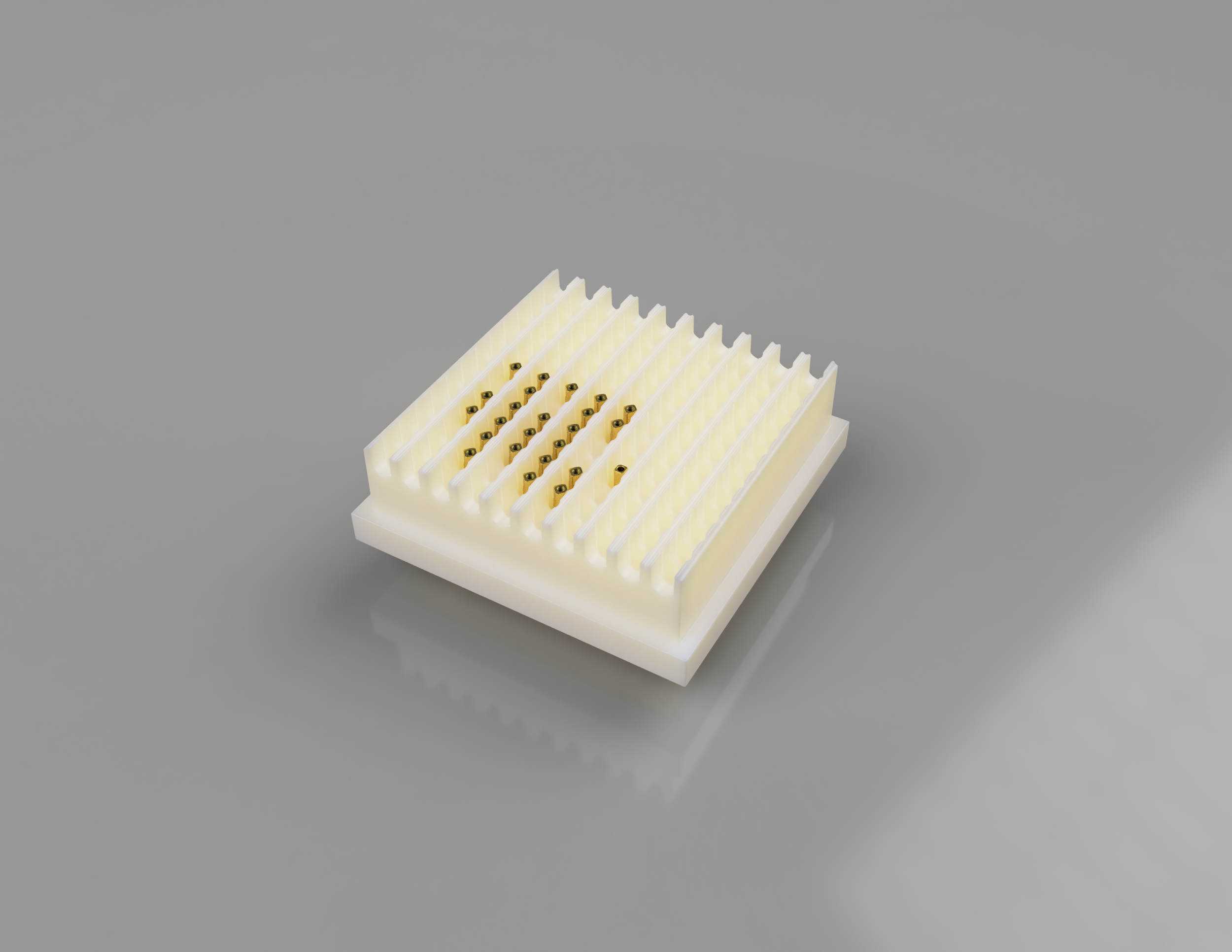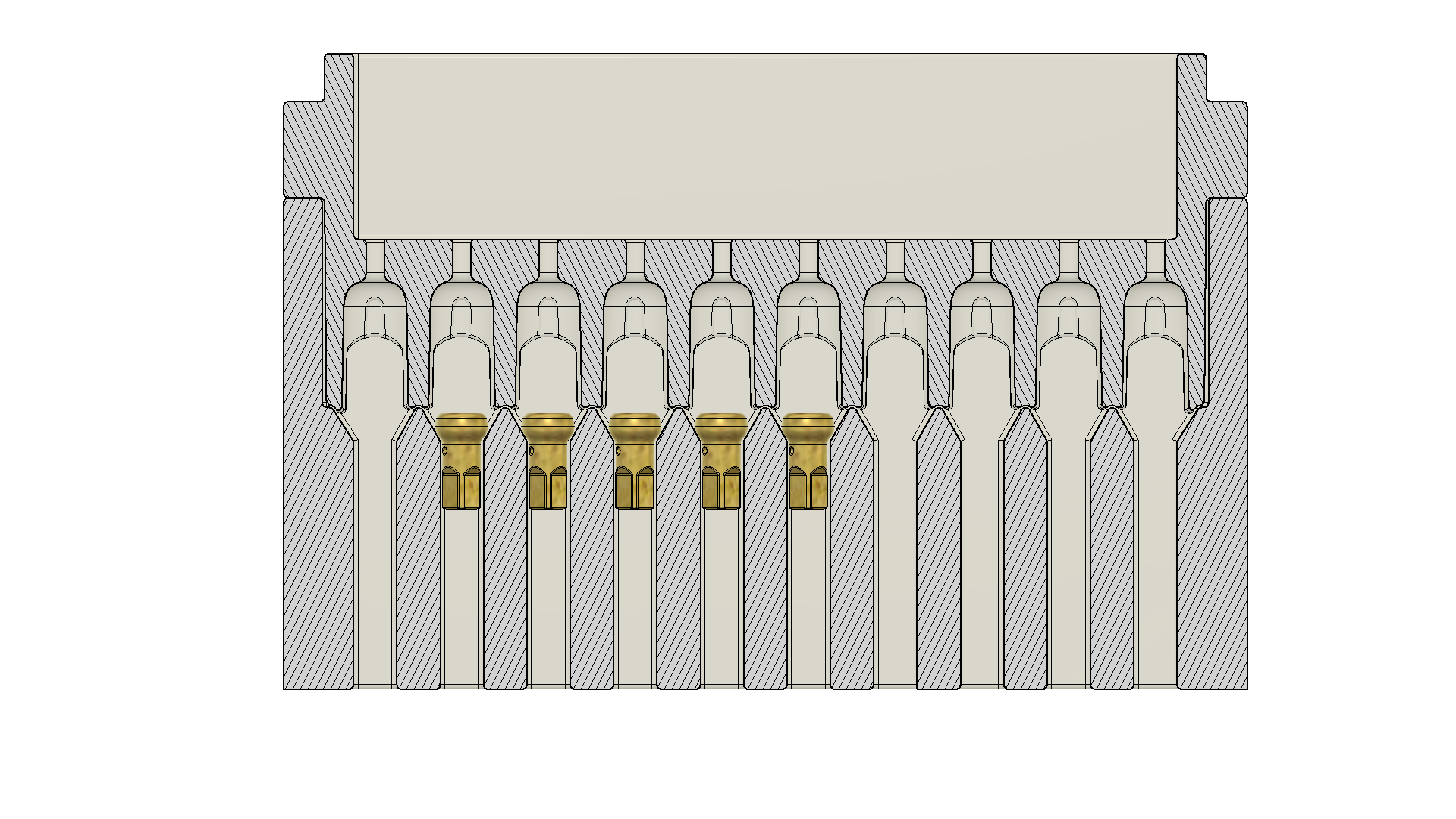Invert Shuffler
Despite not being in the bike industry full-time, I do still wrench on bikes as I have alluded to previously. I’ve recently been tasked with building some wheels; specifically ENVE wheels which utilize a specialized inverted and internal spoke nipple. This is the “nut” that connects the threaded spoke to the rim for those unfamiliar with the mechanism. There is always some minor level of frustration involved with lacing up a set of ENVE wheels due to this hidden aspect of the connection. One of those issues is the lubrication, pick-up, and installation of those inverted nipples.
A tool that wheel builders are using nowadays is this great product commonly called a “nipple shuffler” that allows a builder to align the spoke nipples in a way that makes it easier to lubricate the threads of the spoke nipples and pick them up using a nipple driver tool (a process demonstrated by Rick here and here). Pondering this quandary out loud, the question was posed to me the other day as to the ubiquity of the nipple shuffler box, ”…haven’t they been around forever?”
To the best of my knowledge: no, this is not a ubiquitous tool; I was first introduced to it from my friend only a few years ago and it made every wheel I built a breeze since getting my own. (Or more accurately, the shop I worked at got one). Prior to it’s widespread usage, many builders would retrieve spoke nipples after pouring the nipples onto a clean rag or into a bowl, they would need to be manually inserted onto a tool to then feed them through the rim to connect with the spoke, and lubricating them occurred after they had been threaded to the spoke. Problems with these methods usually consisted of dropping and losing nipples, getting excessive and unnecessary lubrication on the rim surface, and possibly even needing to use both hands in the process of picking up the nipples along with a tool; all combining to make the lacing portion of wheel building rather cumbersome and messy.
Since I left full-time employment at a bike shop, I’ve gone back to the pile of spoke nipples and painstaking greasy pick-ups, until I became tasked with a few sets of ENVE’s to build and an idea popped into my head. Back to those inverted, internal spoke nipples. These look very similar to regular nipples in a lot of ways, however, the shoulder on regular nipples that catch the ledge nicely in the shuffler box for alignment also is the portion that lives inside the rim of a built wheel, with the wrench flats extending outside of the rim towards the hub. On an inverted nipple, those wrench flats live on the inside of the rim, so when they are sorted into the shuffler box, they are not resting in an orientation that goes directly into the rim for threading onto the spoke, they need to be rotated 180˚ because the wrench flats are accessed from outside the circumference of the rim.
So, on this winter break from school, and the onset of this ENVE wheel building project I have begun working on a design to accommodate these specialized spoke nipples, something that will work with the existing common spoke nipple shuffler box supplied by Wheel Fanatyk. Not owning a shuffler box any longer, I got the dimensions of one and printed one out with my Ender 3 Pro 3D printer. With the objective to reorient the spoke nipples in a way that allows them to be picked up with an appropriate driver tool, I have designed an add-on adapter that fits into the box, and when the assembly is rotated 180˚ gravity drops the individual inverted nipples into individual cavities to keep them upright for picking up.
The first iteration, just quickly modeled in Fusion 360 and printed in my garage came out pretty close, the fitment into the primary shuffle box was nice and snug, the interlocking of the blades and cavities prevented nipples from crossing into other sections, and most of the nipples are oriented correctly in their individual cavities. Most, but not all, so some adjustments are needed….
In the meantime, the following photos and video demonstrate the current design which I am calling the Turnstile Nipple Inverter with a decent explanation of the process:








